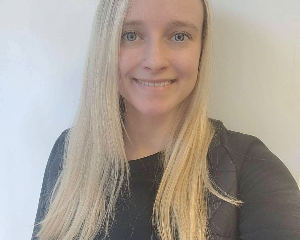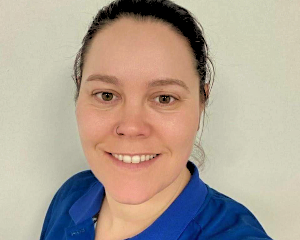Mother's Day Massage Deal
1 Hour Massage Only £39
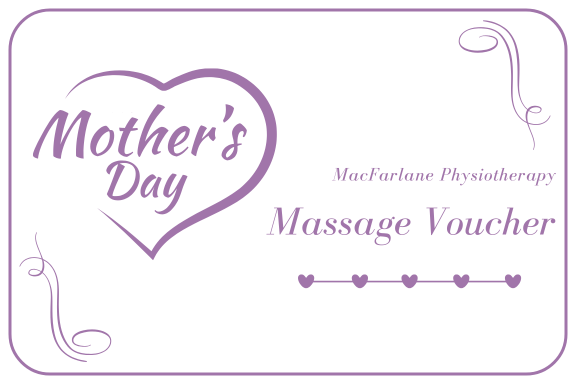
The Team
Eve Sheppard
Eve takes an individualised approach placing the patients' well-being at the centre of all care. By combining a variety of techniques to ensure the best possible results, Eve uses...
Read MoreLouise Dunlop
As a Sports Rehabilitator Louise is a healthcare practitioner specialised in exercise-based rehabilitation and fitness for musculoskeletal conditions. Helping people recover from injury,...
Read MoreMake an Appointment
Massage appointments are available 6 days a week evenings and weekends
Email, call or book online
Sports Massage

A sports massage is a specialized form of massage therapy that is geared towards athletes and individuals engaged in regular physical activity. The primary goal of a sports massage is to help prevent injuries, prepare the body for athletic activity, maintain it in optimal condition, and help athletes recover from workouts and injuries. Here are the key components involved in a sports massage
Sports massage is tailored to the athlete so it is it differs from other massages in the way that we work with the athlete's regime and where they're training and if they're pre-event or if they're post-event.
Who's it for?
You don't have to be like a high-performing athlete to benefit from a sports massage. Anybody that is getting ready for any type of athletic event will benefit or you are just a gym goer that needs a little bit extra. Specific sports are treated in in different manners, it all depends on the your event so if you're a swimmer we'd be focusing on your shoulders if you're a runner we do more focusing on your legs and lower body.
Benefits
- Improved Circulation: Enhances blood flow to muscles, delivering more oxygen and nutrients.
- Reduced Muscle Tension: Helps to relax and lengthen tight muscles.
- Injury Prevention: Keeps muscles supple and joints flexible, reducing the risk of injury.
- Pain Relief: Alleviates muscle soreness and pain.
- Enhanced Flexibility: Increases range of motion and flexibility.
- Faster Recovery: Speeds up recovery after intense physical activity or injury.
Frequency and Duration
Regular Sessions: Clients might have regular sessions as part of your training regimen, ranging from once a week to once a month depending on your level of activity.
Session Length: Sessions typically last between 30 to 90 minutes, depending on the your needs and the areas being treated.
Deep Tissue Massage

Deep tissue massage is targeted mainly for specific targets and it's usually going to be a lot slower and deeper than a Swedish massage. The techniques are similar but there is more pressure in there and focus more on the deeper layers instead of superficial. The most common ailment that people come in requesting deep tissue is for chronic pain around the neck shoulders and lower back.
What's actually happening to your muscles when you get a deep tissue massage what is that it loosens the adhesions scar tissue you have a lot of knots that's been built over a period of time and you can retain lactic acid in order to get through knots sometimes you have to break through and flush.
Who's it for?
It is particularly beneficial for chronic aches and pains and contracted areas such as a stiff neck, upper back, low back pain, leg muscle tightness, and sore shoulders.
Benefits
- Pain Relief: Alleviates chronic pain and tension.
- Improved Mobility: Increases range of motion and flexibility.
- Reduced Inflammation: Helps to reduce inflammation in muscles and joints.
- Stress Relief: Provides deep relaxation and stress relief.
Frequency and Duration
Regular Sessions: You may benefit from regular sessions depending on the severity of your condition, typically ranging from once a week to once a month.
Session Length: Sessions generally last between 60 to 90 minutes, allowing sufficient time to work deeply into the muscles.
Remedial Massage
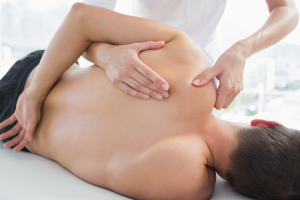
A remedial massage is a therapeutic treatment that focuses on diagnosing and treating musculoskeletal problems and injuries. It aims to address specific issues, alleviate pain, and promote healing and recovery. Here are the key components involved in a remedial massage:
Going into a consultation with a therapist you can expect the therapist to take a very detailed history of what caused the dysfunction and then they would go through a range of movement assessments to see how far you're limited in your movement. Once the assessment is complete, the practitioner will treat you on the table using a range of techniques.
Sometimes it is uncomfortable particularly if the practitioners using trigger point therapy as trigger point therapy can be a little bit painful at times but it depends whether the practitioner needs to work a little bit deeper into the into the muscle structure. Remedial massage safe for everybody. It's for kids up to senior citizens anyone can get a remedial massage for a whole range of conditions.
- Pain Relief: Alleviates pain and discomfort in targeted areas.
- Improved Mobility: Increases range of motion and flexibility.
- Enhanced Recovery: Speeds up recovery from injuries and promotes healing.
- Reduced Muscle Tension: Helps to relax and lengthen tight muscles.
- Improved Posture: Corrects muscle imbalances and improves posture.
Frequency and Duration
Regular Sessions: Clients may benefit from regular sessions depending on the severity of their condition, typically ranging from once a week to once a month.
Session Length: Sessions generally last between 30 to 90 minutes, depending on the areas being treated and the client's needs.
Swedish Massage
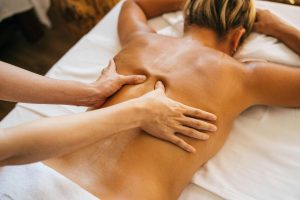 A Swedish massage is one of the most common and well-known types of massage therapy, focusing on promoting relaxation and improving blood circulation. It involves a variety of techniques aimed at easing muscle tension and enhancing overall well-being.
A Swedish massage is one of the most common and well-known types of massage therapy, focusing on promoting relaxation and improving blood circulation. It involves a variety of techniques aimed at easing muscle tension and enhancing overall well-being.
A Swedish massage is a relaxation massage with the goal and focus of a relaxation. The basis is to relax and to release the superficial muscle tension and to increase relaxation. There are five basic techniques that are very basic and used in Swedish massage. One of them is called effleurage, which is gliding motion using long strokes. The second one is called petrissage which consists of more of a squeezing pulling of the muscle get blood circulation. The next one is a rhythmic percussion and then there is vibration which consists more of a little bit of a shaking and the last one is friction.
Who's it for
Swedish is ideal for office workers who get a lot of tension in their upper back. That tension happens because we work on computers every day because we have a tendency to lift our shoulders up when working at keyboards which promotes the building up of knots.
Benefits
- Relaxation: Promotes overall relaxation and reduces stress.
- Improved Circulation: Enhances blood flow to muscles, delivering more oxygen and nutrients.
- Pain Relief: Alleviates muscle soreness and discomfort.
- Increased Flexibility: Helps to improve muscle flexibility and joint range of motion.
- Enhanced Well-being: Boosts mood and provides a sense of well-being.
Frequency and Duration
Regular Sessions: Clients may benefit from regular sessions to maintain relaxation and reduce muscle tension, typically ranging from once a week to once a month.
Session Length: Sessions generally last between 60 to 90 minutes, depending on the client's preferences and needs.

